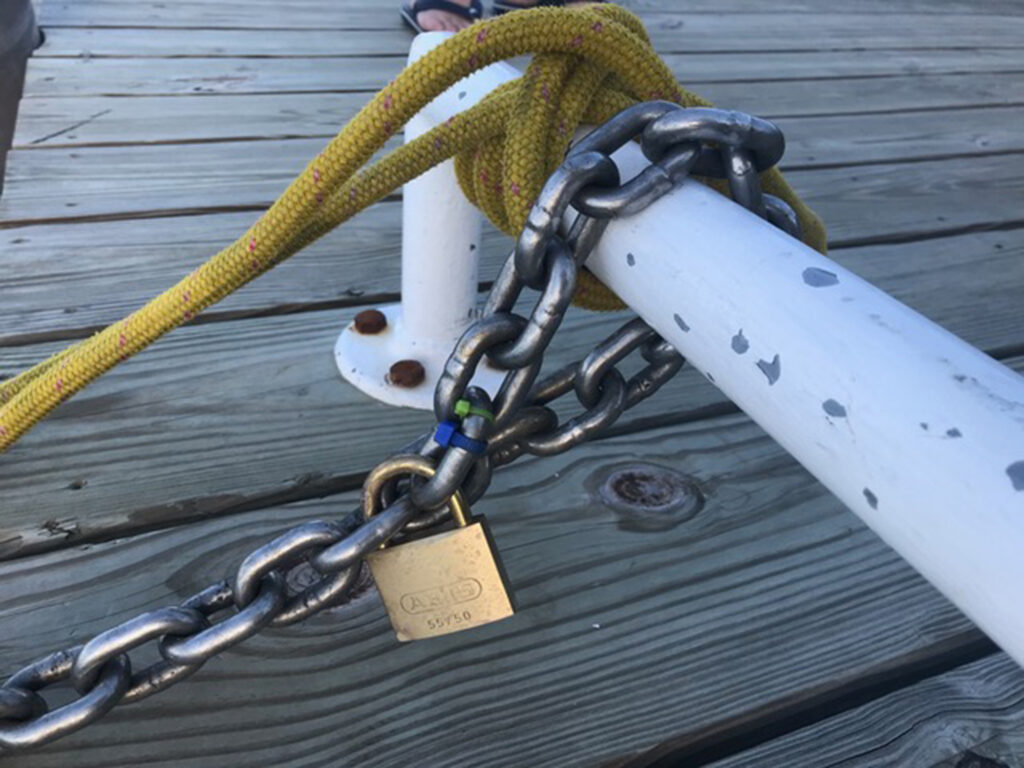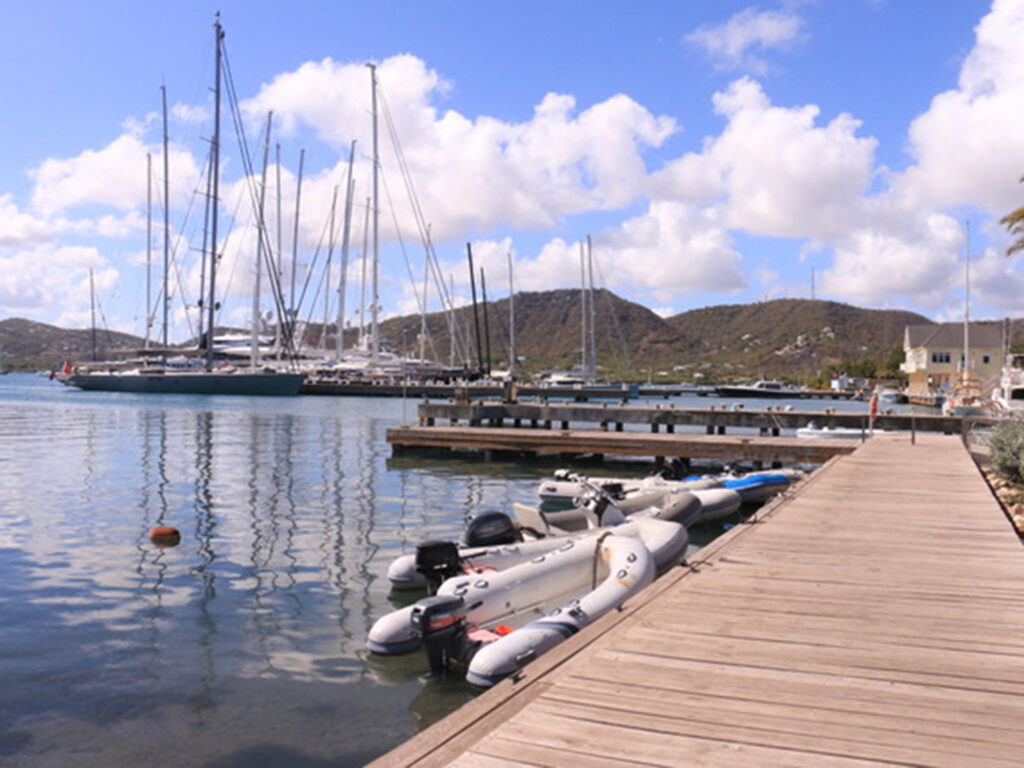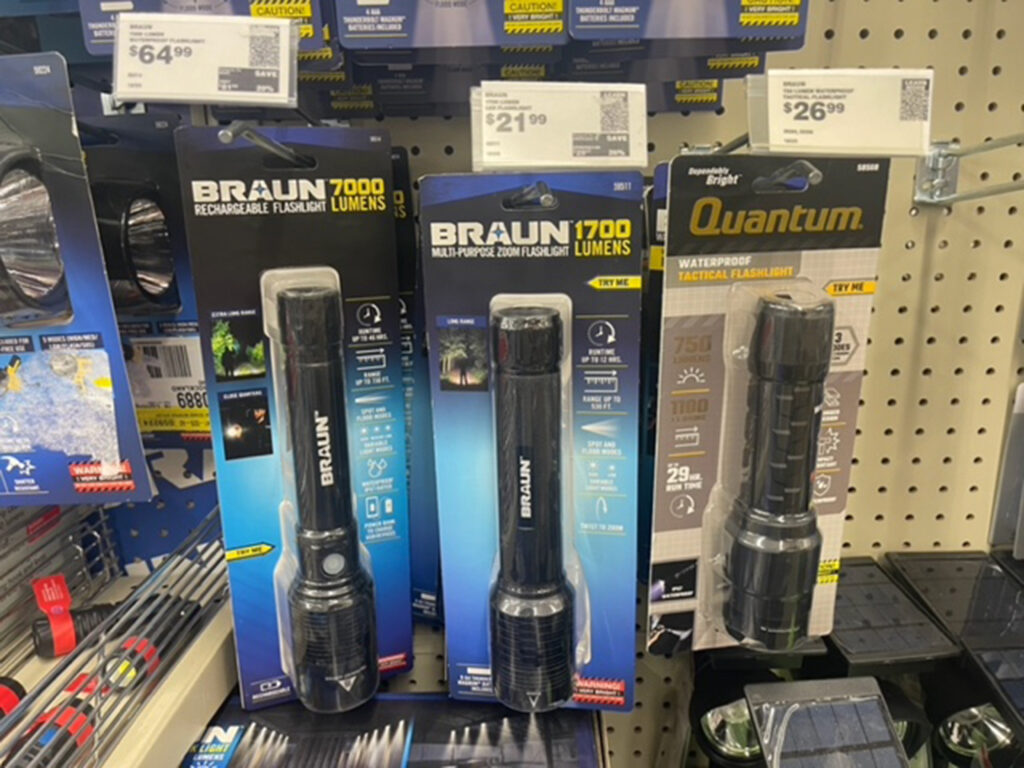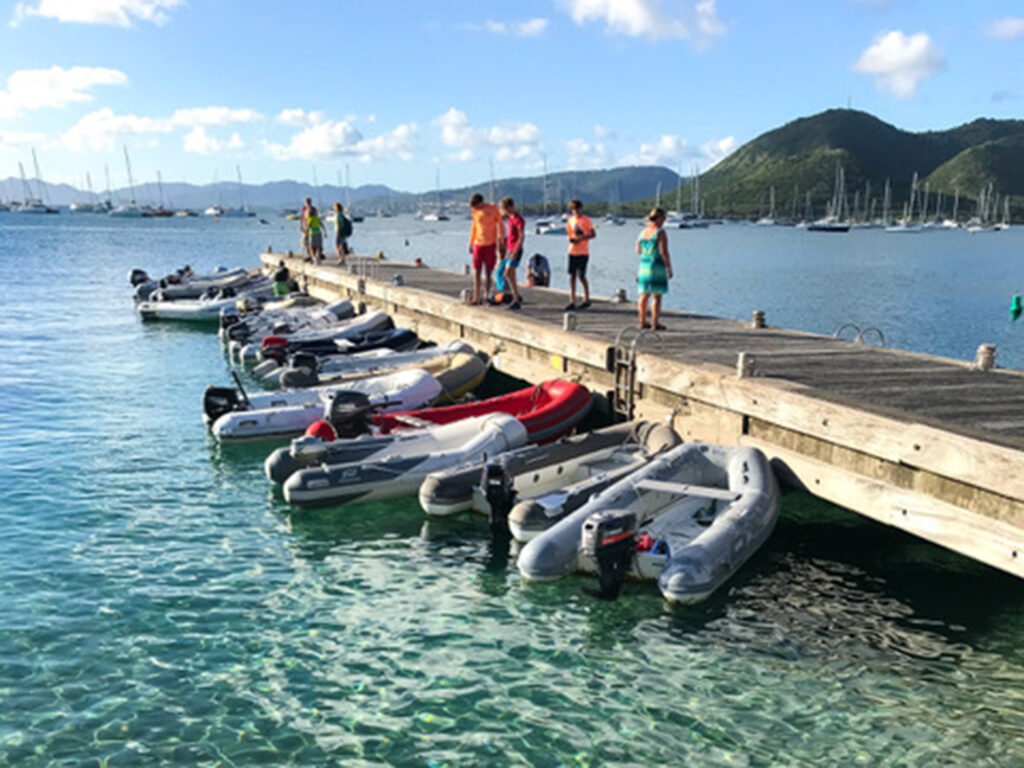
I had just arrived in Bequia to help a friend sail his Reliance 44 cutter, Striker, up the island chain to Antigua. Our plan was to sail down to Grenada for a quick look and then head back north.
However, in February, the disappearance of an American couple on their yacht in Grenada put a damper on many cruisers’ plans to visit. My friend was less than enthusiastic, so we elected to forgo Grenada and sail only as far south as Carriacou. We both wanted to see the shipwrights who still build wooden boats by hand, without plans. Then we’d head north, maybe.
Along the way, we obviously wanted to protect ourselves and the boat against any strangers who tried to board it. A good start is to have someone sleep out on deck. When I’m cruising in the islands, I always sleep in the cockpit, mainly because it’s too stuffy for me below. By sleeping on deck, I’m also more aware of my environment. The only downsides are the full moon and rain showers. A wind shift or something rubbing along the hull can awaken me; so far, thankfully, it has never been an uninvited guest.
Even so, as I nestle into my made-up berth in the cockpit, I often imagine how I might respond if an intruder, or intruders, were to board my boat. Fight or flight? Confront or acquiesce? In 1966, as a US Navy journalist, I went through combat training with the US Marines in preparation for deployment to Vietnam. Those lessons are still with me.

Be aware and prepare.
Know that the dinghy is secure, either locked on astern or hauled up alongside.
Be sure that the swim ladder is up and secure
Have something on hand that could be used to discourage a boarder.

Think about what could be added for security. Pepper spray is an option. A dose of that spray in an intruder’s face, from 10 feet away, renders him blind, stumbling around, cursing and wondering how to get off the boat without falling overboard. (Before leaving Maine to join Richard in Bequia, I bought a $14 can and stuffed it into my checked luggage.)
A powerful flashlight is another innocent-looking weapon that many cruisers already have on board. The bright light floods the intruder’s face, destroying his night vision. For a few minutes, the intruder becomes blind, stumbling around the deck in an attempt to escape the light.

Also have a handheld air horn. A prolonged blast in the intruder’s face will leave him more concerned about retreat than attack. At that point, a long-handled boat hook might help prod the suddenly blind, deaf intruder to a hasty exit over the side.

The surprise of having someone confront an intruder is also a deterrent. Most uninvited boarders are not professionals; they don’t expect someone to confront them. Now, I’m not advocating for this as a general practice, but it is something to consider. Start by making sure the air horn and flashlight are within reach.
A prolonged horn blast will also alert anyone else anchored nearby. Commodore Joan Conover of the Seven Seas Cruising Association told me that she is a fan of the WoodsCan Hornet airhorn, which retails online for about $260. “First, it has a fast and easy-to-use pistol grip,” Conover said. “Second, boy, does it make noise!”
Keep the boat’s VHF radio on Channel 16, all night. If another boat makes the call that there’s an intruder in the anchorage, you’ll hear it. You’ll also be able to put out your own warning.
Thinking about bringing a gun on board? It’s not a wise move unless you are trained to use it, and have used it under fire. Shooting at clay pigeons doesn’t count. They don’t shoot back. You’re likely to do more damage with a gun than the intruder will. Even highly trained police officers make poor judgment calls in these kinds of situations.
Preparation is preferable to confrontation, so try not to look like easy pickings. If your boat seems as if it would be hard to get aboard, then thieves will pass it by. Captain Josh Slocum, the solo circumnavigator, scattered steel carpet tacks on the deck at night when at anchor in a strange cove. The screams of pain from anyone boarding unannounced would awaken the savvy old skipper.

Capt. Fatty Goodlander, a regular Cruising World contributor, rigged a homemade pressure switch under the cockpit grating. If an intruder steps into the cockpit, a loud horn activates, frightening the attacker and waking the good captain.
How about installing a motion detector on your boat’s mast, like the one that turns on my driveway lights when anyone drives in? I welcome the illuminated drive when I arrive at night, but an intruder may not. Wire one of those lights up to the spreader lights, and aim it aft. As soon as someone approaches the stern, the light comes on. That’s enough to scare away an intruder, and it’s handy when you arrive back from an evening ashore.
Be aware of what’s around you. If you are anchored alone in a strange cove, take extra precautions. Going ashore? Secure the dinghy, the engine and the fuel tank with a half-inch chain and a lock. Wire cables can be cut.

These days, there’s a scam on the islands in which dinghies go missing, not to be sold, but to be ransomed. When you come back from dinner, a helpful young chap shows up and says he knows where your dinghy is. He’s more than willing to show you for $500.
Some cruisers own a dog or two. If they are well trained and alert, they are worth their weight in gold.
Resources to Help You Stay Safe
Doyle Guides addresses security in the Windward Islands in its guide books and app. The guide also notes anchorages where thefts are common.
Facebook groups for cruisers are another good source of information.
The Seven Seas Cruising Association, a worldwide organization for liveaboard cruisers, shares recent and past incidents on its website: www.ssca.org. Readers can sign up for daily or weekly notifications.
Writer Chris Doyle provided a look at crime in the islands in the April 2024 issue of Caribbean Compass: www.caribbeancompass.com.








